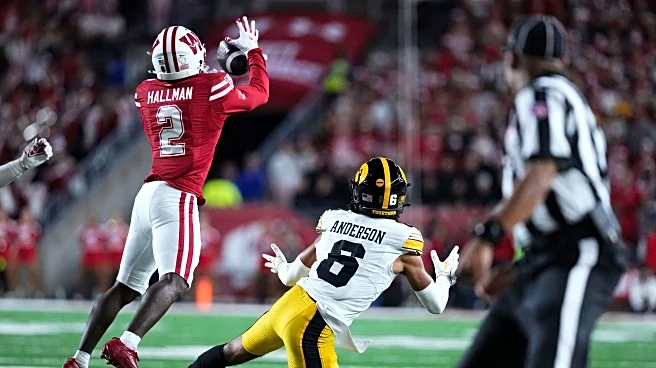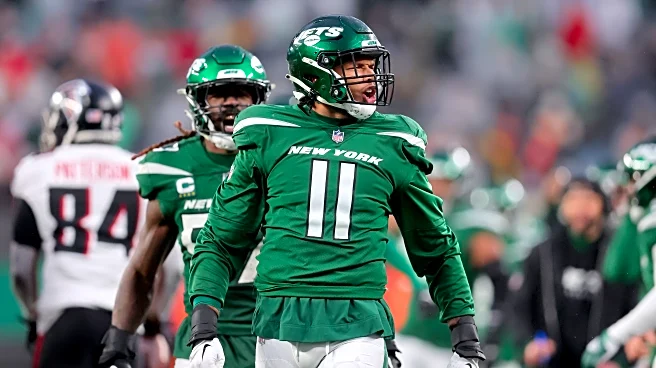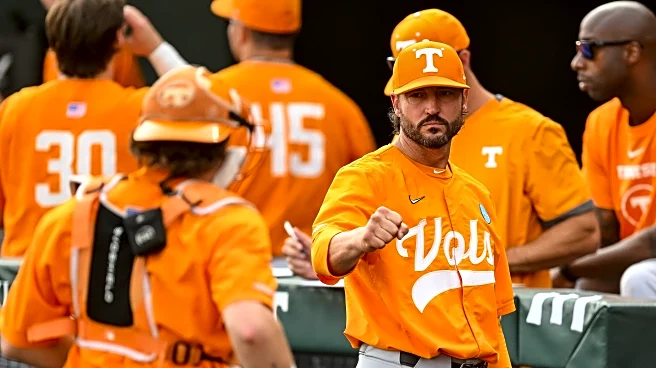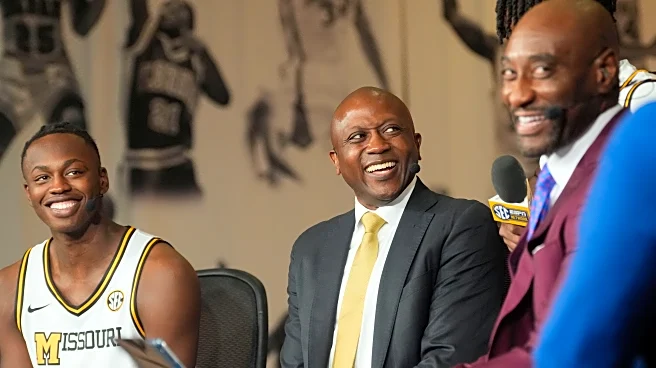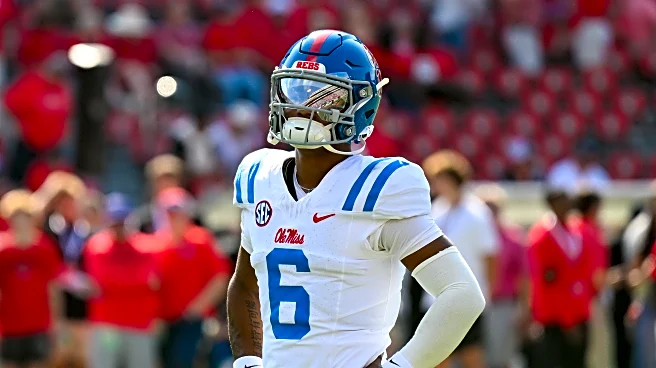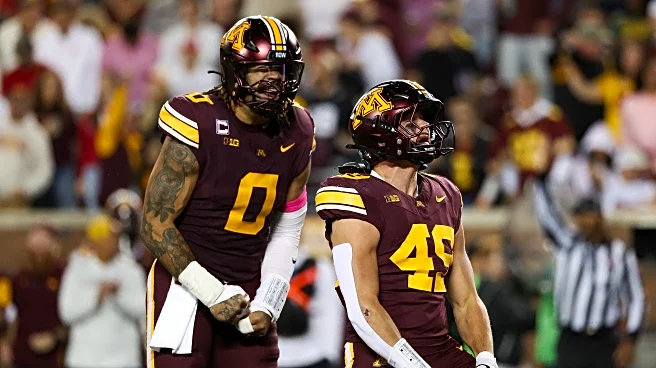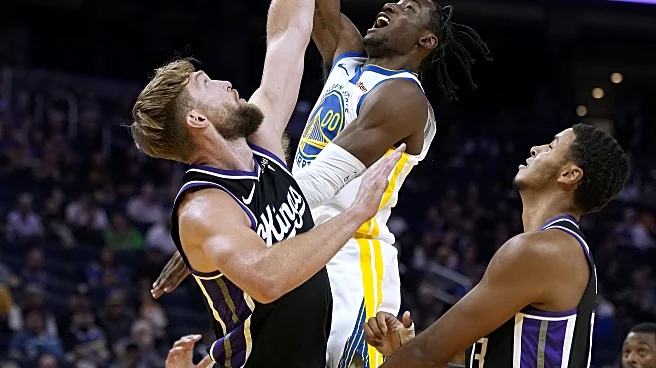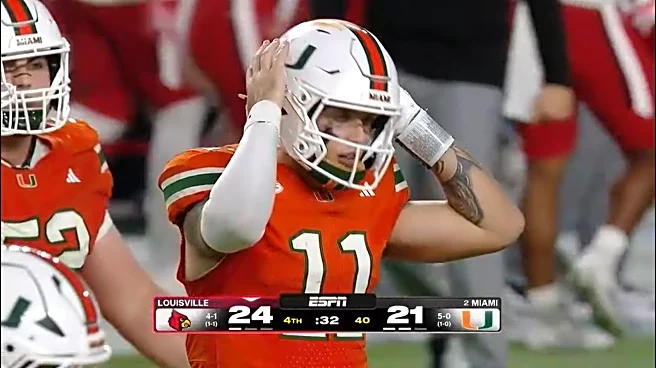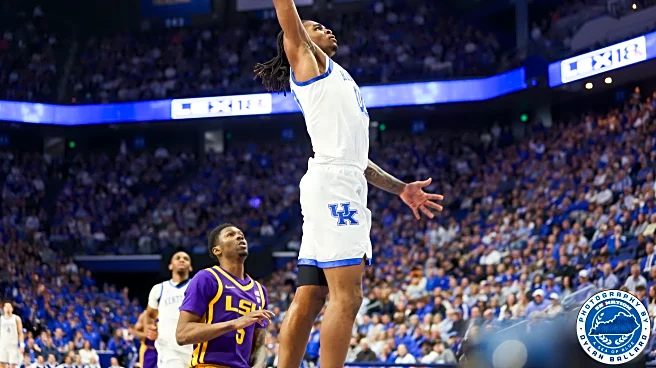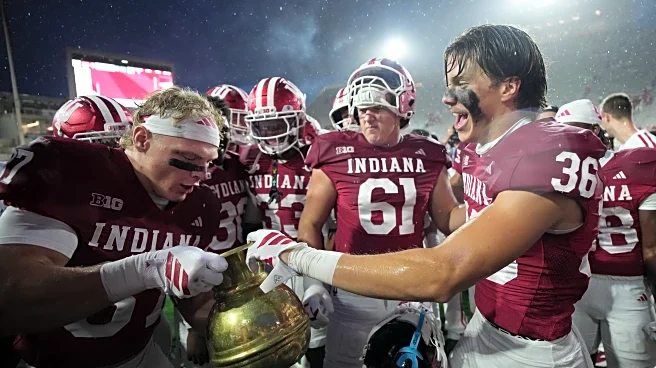Special thanks to Kedrick Stumbris of Talkin’ Badgers for joining me to discuss Wisconsin’s roster on this week’s podcast:
The Wisconsin Badgers have many, many problems. Disentangling which of these came
from dealing with some of the most horrific injury luck I’ve ever seen, which were the forseeable results of poor choices, and which were defensible decisions that just didn’t work out or show signs of long term benefit but not until the future is beyond the scope of today’s article, though in the offseason I’ll make a go of it.
For our immediate purposes your film reviewer is left the still challenging task of describing what type of schemes Wisconsin is likely to employ on Saturday and with which key personnel – these have been shifting week to week as the injury count has continued to mount. And as Kedrick noted on the podcast, the most specific the staff will get is locating which half of an injured player’s body has an issue. Some guesswork is necessary here and on Kedrick’s advice I’ve decided to include multiple potential players at QB and some other positions in film compilations to describe all reasonably possible outcomes.
Offense

In the middle of the third possession of the opening game, starter #9 QB Edwards suffered a non-contact injury after handing off the ball – something just looked very wrong in his step as he moved away from the mesh. This was the third straight season in which a transfer QB for the Badgers had gone out with injury early in the year, an appalling run of bad luck.
For the rest of the game against Miami of Ohio, the next week’s game against Middle Tennessee, and the third week against Alabama, the backup #18 QB O’Neil played, a transfer from San Diego State (he spells his name identically to the former Oregon starter from the early 90s, but is unrelated). In week 4 against Maryland, Edwards tried to make a return, but only lasted a drive before being removed from the game and hasn’t played since, although he regularly appears on the sidelines and Kedrick told me that there’s a possibility that he makes it back at some point later in the season, but almost certainly not on Saturday. O’Neil finished the rest of meaningful play in that game, but during garbage time down four scores, the Badgers put in the third transfer, #15 QB Simmons from FCS Southern Illinois.
After the bye week, Simmons was the starter against a notably tougher string of defenses – Michigan, Iowa, and Ohio State in weeks 6, 7, and 8 respectively. On the last play of the third quarter, Simmons took a sack with a lot of pressure on his ankle, and after the quarter break O’Neil returned and finished out the game for the Badgers’ remaining 16 snaps. The staff took pains, however, to say that Simmons remained available.
It’s difficult to know what to make of the varying QB performances, the differences in playcalling and scheme from new OC Grimes this year and for each QB, and the staff’s vague explanations to the media about their personnel’s status. As Kedrick put it on the podcast, there’s maybe 20 minutes of tape on what Grimes wants to do with the offense under nominal circumstances, and the rest of it has been reeling from not only the QB injuries but mounting problems at every other position from the offensive line to the skill talent.
Here are the splits on the metrics I track from charting for each QB during meaningful play, as well as their raw NCAA passer ratings — 142 is the current FBS median, with a standard deviation of 15, so these numbers are shockingly poor — as well as the adjusted ratings which exclude passes thrown during garbage time (Kedrick’s comment on the podcast: “oh, so you must have excluded a lot” … indeed).

Some elements of Grimes’ offense I can recognize on tape from his time at BYU, Baylor, and Kansas that I’d watched for other projects, and have been more or less as anticipated in this past Summer’s preview – wide zone rushing, frequent and multiple pre-snap shifts, and jet motions are a constant with each QB. It’s also remarkable that for all these moving parts and with constant personnel changes throughout the season, the procedural penalty rate has been much lower than I might have expected, if not totally perfect, so it’s clear that these were all installed early on Grimes’ arrival and have been drilled into everyone on the squad.
However, certain other elements of what I’ve understood to be Grimes’ playbook such as frequent use of the vertical passing game — after setting it up with horizontal stretch — haven’t really shown up at all, and other elements such as designed QB runs or WR screens have been employed by one QB or available skill talent group but disappeared under another. I suspect these sporadic or total absences aren’t because Grimes suddenly doesn’t want to do these things but rather because the personnel situation means he thinks it’d be inadvisable.
For the QBs, the run/pass balance is a little paradoxical. With O’Neil in, it’s more of a passing team, about a 55/45 split favoring the pass, and yet his major contribution is that he activates the designed QB run game and indeed about 20% of designed runs while he’s under center have him carrying the ball. With Simmons in, there are practically no designed QB runs at all, but they still wind up as more of a rushing offense, with a 55/45 split the other way, favoring handoffs.
The other major difference with their legs is that O’Neil strikes both Kedrick and I as much more likely to drop his eyes and take off – about 24% of O’Neil’s dropbacks end in a sack or scramble (I categorize these as passing plays, not rushes, for the metrics in this article), whereas it’s only 4% for Simmons who’s more likely to get the ball out of his hand on time or just throw it away. However, O’Neil takes care of the ball much better, with a 5.21% turnover per passing play rate, while Simmons is more than double that at 10.87%.
There’s no getting around the fact that Simmons’ passing numbers are significantly worse than O’Neil’s, and I also think they put O’Neil in first because his running ability is more of a fit for Grimes’ playbook. However, my subjective opinion from watching tape is that Simmons is simply a better, more accurate, and more confident passer than O’Neil, and his comparitively worse numbers are entirely explained by the much tougher defenses he faced. The QB run element isn’t getting them anything and the scramble and sack issue is creating a large amount of negative plays which Simmons tends to avoid. If both were available and I were making the choice, I should think Simmons gives the Badgers a better chance of winning.
My opinion is hardly dispositive of course, so here’s a representative sample of O’Neil’s play:
(Reminder – you can use the button in the lower right corner to control playback speed)
- :00 – The opener was 10-0 with 8 minutes left (a pick that set up the offense on the 2-yd line finally let them put it away, though it took three plays) largely because every drive ended on O’Neil dropping his eyes on a scramble and/or sack. The protection is pretty sloppy here but there’s multiple safe dumpoffs available for 3-5 yd gains to set them up for 3rd & manageable. Instead this redzone trip ended in pressing and an interception.
- :19 – It’s been clear watching tape that the QBs are well versed in the offense and prepared to take over, here O’Neil lengthily re-arranges the entire misaligned formation to set up the boundary iso to the top receiver.
- :37 – I believe this is a live read off jet motion and is the plurailty of O’Neil’s designed carries. Correct read of the backer and a nice pull, waiting till the last moment to do so, then a couple of great moves to dodge the DT who’s escaped the guard and the DB who’s escaped the other guard, to pick up the 1st down.
- :57 – This is after O’Neil was re-inserted for Simmons, I was wondering if his accuracy had improved any for the time off but I can’t say I saw it, he kept missing wide. He’s rushing his motion and aiming the ball with his upper body as the TE is moving away from him, throwing with anticipation means getting his hips pointed to where they need to be in advance – he needs to have this figured out the instant he comes out of his drop and have his body turned for the throw.
And Simmons’ play:
- :00 – This was very early into when I was seeing Simmons and I was struck by the quick and decisive field processing, getting to the third read just before the total line demolition reached him.
- :26 – And then this was probably much too decisive. Kedrick and I discussed this play on the podcast, the three turnovers in the Iowa game all looked like Simmons was convinced he had the defense solved and could just throw through them.
- :50 – This simulated pressure isn’t getting home fast enough to warrant such a quick throw. Rushing it and over-rotating his upper body places the ball behind the receiver, making him fall down behind the sticks on 3rd down. If Simmons had more patience he might have hit the inside receiver who’s broken free of the safety on the out-pattern for a bigger gain.
- 1:11 – Good use of the free play here, watch Simmons’ feet and helmet – subtle adjustment away from the LB hammering on the RB while his eyes stay downfield, then right on time through the narrow window in front of the other LB to hit the TE breaking in behind him.
The receiver getting the lion’s share of the targets is #8 WR Anthony, as he has for the last couple years. His per-target numbers this season have been at almost exactly FBS medians, 51.7% success rate and 7.43 adjusted YPT, though as we joked on the podcast, given the constraints of this offense hitting average numbers might make him the second coming of Randy Moss. The slot receiver who has been getting the second most targets — although he missed almost the entirety of the Iowa game with a concussion — as well as being by far the most successful sweep man on the team is #2 WR Kekahuna. His numbers as a receiver are very boom or bust – a miserable 33% efficiency rate, but on his few catches they’ve gone big so he comes out to a nearly average 7.07 adjusted YPT.
The other outside man is #1 WR Brooks, who should be getting more targets than just the ten he’s had so far in meaningful play (though Kedrick pointed out it tends to happen in Grimes offenses that everything goes to just two guys), because Brooks has great numbers at 60% success and 8.33 YPT. The only other wideout to have been targeted is #3 WR Henry, but it’s only been four times, not enough for statistical evaluation, and he’s actually been used more often for sweeps … although unlike Kekahuna these are rarely successful. Henry didn’t appear in last week’s game and his injury status is uncertain.
The tight ends have been difficult to keep track of. Last year they had a pair who got all the reps, one transferred out (to Rutgers, Oregon saw him last week), the other #11 TE Ashcraft remained but has been in and out of the lineup with multiple injuries and has been below his previous effectiveness in blocking or receiving when in. #34 FB Acker returns and is officially listed as a tight end, but as Kedrick noted this is just a quirk of the roster and he’s really just a fullback who apparently is in love with hitting people (a couple of years ago there was a running back problem and Acker graded out substantially better than the rest of the room as a ballcarrier, I asked Kedrick if he thought Acker might be a solution this year and he shot that down).
The two tight ends I’ve seen in meaningful play are #86 TE Mason, a transfer from Missouri State, and #85 TE Stec, who’s primarily used as a blocker. Mason’s role has really exploded as Ashcraft has been sidelined, however unfortunately his grades on my tally sheet just don’t support the expanded role – his per-target success rate is below 30% on frequent misses and he has under 6.5 adjusted YPT, making his near-tie with Anthony for targets a big sink in the passing game. Mason’s blocking grades are also a significant hindrance in the run game, where lead blocking in Grimes’ run scheme requires him to nail his assignments and I see frequent confusion about whom to hit.
I would say that the two relatively effective every-down running backs have been the 2024 recruits #6 RB Dupree and #7 RB D. Jones, with Jones as the lead and Dupree the second back in. Their numbers aren’t great, both about 44% success rates and 3.6 adjusted YPC, but considering the parlous state of the blocking I thought they were doing as well as could be expected. But both have been hurt in recent weeks – Dupree in week 7 against Iowa, having to be carried off the field by two trainers and hasn’t played since, and Jones last week against Ohio State with Kedrick telling me he was seen in a walking boot.
In their absence the carries have gone to #25 RB Yacamelli, who over the years has graded out very poorly on my tally sheet even understanding that he was probably supposed to be a short yardage back. This year he’s coming in at a 21% success rate and 2.3 YPC.
The offensive line has been something of a nightmare. Even before the season started, the planned replacements for the two departures from last year’s line, at left tackle and right guard, were both hurt. Then the plan B didn’t survive even a single game, as the replacement for the replacement at left tackle, CMU transfer #74 LT Heinzen, was pulled for ineffectiveness during the opener against Miami of Ohio according to Kedrick. That kicked off a shift of the longtime right tackle moving to the left side, where he’s stayed ever since and his grades have suffered for flipping sides, that’s #71 LT Mahlman, and the replacement for the replacement at right guard filling in his spot, that’s redshirt freshman #75 RT Mandell who’s clearly playing out of position.
Immediately afterwards the center, #57 C Renfro got hurt, which led to a whole chain of replacements on the interior which have included #73 OG Kodenko, #50 OG Cory, #78 OG Cubberly, and to my astonishment, Heinzen coming back to play a game at center.
I think on Saturday that Mahlman and Mandell will be available at their sort-of new starting spots, #56 LG Brunner should be good to go who’s the only returner from last year unaffected by all this, and Renfro seems to be back in the lineup although they’ve rushed him back too soon before. Right guard will be an adventure as it has been all year but there are at least three warm bodies who could go in.
Needless to say the constant shuffling and playing 3rd or 4th options at most positions has had a negative effect on performance grades, with at least one major error and usually more than one on virtually every snap I’ve charted this season. The most significant issue is assignments in the zone scheme, followed by pressure pickup – that is to say, the linemen aren’t exactly hitting poorly, but they are hitting the wrong guys.
Here’s a representative sample of successful rushing plays:
- :00 – Note the mulitple pre-snap shifts, a complete alignment change followed by fly motion at the snap and a fake handoff to the tailback. The backside LB’s hesitation (the DB has the tailback, but he needs a moment to remember that) is all the play requires to get 8 yards.
- :14 – Here’s the best use-case for Yacamelli – the LT and C have both blown their blocks so this backer iso in short yardage has now become “smash your face directly into three guys at once and muscle just enough to earn a 1st down.” Good soldier, no doubt about that.
- :28 – So there’s Acker doing his thing in the I-formation, Michigan’s stand-up end is stoned, and that’s nice work by the TE and LT on the DT then splitting off to the backside LB. The pulling RG has forgotten what the play is though and runs to the D-gap instead of hitting the frontside LB, meanwhile Anthony can’t figure out which DB is his assignment so hits neither, and Jones is left to cut out into the unblocked corner and only gets five yards.
- :39 – Tons of eye candy to distract from a very simple counter run, Acker into the backfield repositions the LBs so they run the wrong way, and the sweep pulls the end wide and when he comes back he whiffs on Dupree and takes out his teammate the nickel instead. Even though the FB misses his block, the C is blocking backwards, and the RT on the backside is getting embarrassed, the play is successful just because of the manipulation baked into it which this defense can’t resist – on the seven times they ran it this game, Wisconsin averaged 9.0 YPC.
And unsuccessful rushing plays:
- :00 – Here’s Henry on the fly into reverse and … yikes. I don’t think this is his fault, just the design of the plays he’s asked to run go between or off-tackle and with this year’s line that’s asking for trouble, as here when somehow the LT and LG are blocking the same guy (and falling down at it) while the frontside backer goes unblocked so Acker diverts to try and hit him, doesn’t get him clean, and also now the DB he was meant to hit is perfectly clean to also tackle Henry.
- :07 – I looked up the roster for Middle and the defenders who are destroying the right side of the line are each at least 92 lbs lighter than their respective blockers. Yacamelli just doesn’t have the ability to cut quickly and maintain his balance through contact to make this kind of move and get out of a tackle.
- :13 – First problem: the TE and LT are just losing. Second problem: after the WR’s motion reveals zone (the whole point) so the nickel stays put and the backer on the other side is over him, it becomes that WR’s job to block that backer, so the LG can’t leave his DT block to go hunt him. Third problem: hey remember how the nickel in zone is now unoccupied because of the motion? He’s the pulling RG’s assignment now, if the RG just mindlessly smashes into the hole instead of picking him up then the nickel will walk unobstructed into the backfield and get a TFL. The nickel is even pointing directly at the back to say what he’s going to do, like Babe Ruth calling his home run.
- :37 – I felt bad on the podcast singling out Mason for comment but the role has fallen to him given how much split flow there is in this offense, and it’s just … this is not at all how his lead block works, it’s completely backwards. This was the sixth run play of the game and I’d yet to see the TE have his blocking assignment correct.
Defense

Kedrick and I agreed that there’s been a scheme change to an even surface for DC Tressel’s squad this year, though we had a bit of a debate on what exactly to call it. In the past, this defense has been structured as a base 3-4 for facing rushing downs, with a two-gapping nose tackle in the middle, two big very ends to either side of him, and OLBs off the edges with a pair of ILBs off-ball. Adding to the mix was that up until last year they had a “Dollar” position at DB played by a unique figure in Hunter Wohler, who’d line up anywhere on the field including the line of scrimmage and would creditably change the math up front because he could take on linemen.
In 2025, Wohler is off to the NFL and the last of Wisconsin’s nose tackles has transferred out, and it appears the Badgers have undergone the same switch that I’ve seen Stanford, Cal, and Oregon State make – stop faking a nose and convert to a 2-4-5 with expanded roles for linebackers to replace the gap-plugging. They’ve dutifully gotten bigger at the interior spots, with some impressive weight and strength gains and a pretty good four-man rotation at what I’d now describe as the defensive tackle positions.
I think they also tried to add some heft to the edges with some transfers, but this is where the sticking point is for me – I think Kedrick is right that Tressel is pushing them in the direction of a 4-3 under (the name is almost synonymous with the structure, and Kedrick seemed a little disappointed that novel personnel fits were less in evidence than he’d initially hoped), but right now the edges are basically the same guys who were recruited to be outside linebackers rather than a new set of true defensive ends, and they don’t have the size to set the edge against the run for that system or the bend to get around offensive tackles and generate sacks from a narrower alignment. I think that, even though they pull the nickel and put in a third off-ball linebacker against heavy offensive sets, that this is still better thought of as a 2-4-5 / 2-5-4 than a 4-2-5 / 4-3 due to not yet having the DEs necessary to make it work as such.
The interior spots have consolidated and improved, in my opinion, around returners #68 DT Barten and #95 DT Lane, both of whom have bulked up even more since last year, and the transfer additions of #99 DT P. Petersen from Tulane and #31 DT Suggs from LSU. There’s a pretty free rotation here, with comparable rep counts and grades during meaningful play for all four, and I think it’s been the main reason why they’ve ticked up in basic rush defense in all metrics I track compared to last year, when the middle of the line would just get run over for big gains, and even linemen who I thought looked good like Barten would suffer from overwork.
The two main returners in the edge rotation are #17 OLB D. Peterson, who I’d characterize as a starter, and #15 OLB Cheeks, who I’d say is part of the second line but is used pretty often and has a similar athletic profile to the two starters. The starter opposite Peterson is a transfer from Louisville, #22 OLB Reiger … Kedrick told me that he was part of an attempt to get bigger and stronger on the edge and I can see why, he’s 6’5” and I think could have the frame to really bulk up, and hits like a truck (Peterson and Cheeks are also very good converting speed to power), but Reiger like Peterson and Cheeks have topped out at about 250 lbs and the three of them really are playing as just OLBs. The fourth edge in the rotation really is much bigger, #92 OLB C. Walker from WMU at 290 lbs, but I see him much less often and he’s just been far less effective, frequently losing his feet and getting knocked over.
Off ball, there are two starters in the main spots nearly every meaningful down, #0 ILB Alliegro and #4 ILB T. Curtis (who’d previously transferred in from USC, I gave Kedrick a hard time on the podcast about him coming over with Alex Grinch who was briefly a safeties coach). Unfortunately, while Kedrick told me that these guys are fan favorites for some heroism they’ve displayed — for example, Aliegro broke his arm last week and went back into the game with a club on it — I have to report that I consistently see problems with over-aggression in the run game hitting the wrong gaps and gross coverage liability issues in pass defense, which Kedrick told me he’s seen as well. I think that due to the structure of this defense funneling a lot to these guys, it’s been the single biggest issue in being underwater in both run and pass efficiency.
The rest of the linebacker corps is interesting. #59 LB Witt is officially listed as an OLB, though that’s confusing because he’s an off-ball backer who Kedrick and I agreed is best understood as the SAM who comes in to replace the nickel against 12-personnel or heavier offensive sets. There are also a couple of talented true freshmen who’ve been getting some more run as the year has gone on – #44 ILB Catalano is the one backup to the starters I’ve seen, and #8 ILB Posa (the only recruit from New Mexico in program history, Kedrick informed me) has some situational roles on 3rd down as a pass rusher and may be the new “X-factor” guy playing a position different structurally but similar philosophically to Wohler.
Here’s a representative sample of successful rush defenses:
- :00 – The DTs are doing a great job eating those combos so nobody can climb to the second level, which was a pretty effortless thing last year. Curtis is able to come down clean into the intended A-gap, so the back bounces out where Reiger and Witt have the tight ends under control.
- :19 – This is what the backers are trying to accomplish on pretty much every run play that I see – knife in very early, before the blocks can develop. Barten is doing his job occupying the C and RG, delaying the RG long enough so that Curtis can get good leverage around him and cut off the escape, but really Alliegro is modeling their ideal rep by firing immediately under the LG while the C has to lean hard into Barten and there’s space to fit. Then Suggs can bowl the LT over the trip hazard they’ve created.
- :36 – Here it doesn’t work for the LBs at all — it just about never did against this offense — but the weak points on this line were successfully exploited by the OLB Peterson getting under their slow TE, while the DTs Petersen and Lane stove in the guards.
- :47 – It’s year 3 of the post-Studrawa doldroms for the Buckeyes’ o-line, and the Badgers were pushing around their jumbo JAGs all day. Nice sidestep by Barton off the snap from his 1-tech spot to split the RG/RT, while Suggs occupies the LG/C long enough for the backers to come down and cut off the escape lanes. Note that’s Catalano playing MIKE and Posa at SAM.
And unsuccessful rush defenses:
- :00 – While Wisconsin has been an excellent 3rd down defense against the pass in all distance situations, they’re middling to poor against the run on 3rd down, with 3rd & short being their worst look as overaggression tends to backfire. Even with two linebackers and two defensive backs on the offenses’ right side nobody actually sets the edge, instead all firing inside. The back cuts out and almost has the 1st down before contact, with two defenders running into each other and freeing him to pick up the rest of the distance and then some.
- :22 – I think Walker’s getting held somewhat — not that Big Ten officials ever call it, tbough they should — but this is the structural problem with the new scheme, their biggest “end” is leveraged inside the TE and can’t play through him, so they’re not getting the upside of either a wide 7 or a true 5. Secondary tackling from the backups could use some work.
- :53 – Run stopping on 2nd & short/medium is very poor, under 25%, as they don’t really use the safeties to help and the linebackers tend to guess and guess wrong.
- 1:03 – The extent to which the defense got suckered by Iowa’s run game was truly appalling; I’d be driven to drink if I were a Wisconsin fan too. This is a Pop Warner play, everyone on the field has seen is a thousand times, and yet there’s four Badgers in the backfield looking around like they’ve been bamboozled by a magic trick. Walker needs to shiver the RT not chase him and get sealed by the TE and Alliegro needs to wrong-arm the inside puller, not get swallowed by the outside one so the center can waddle up to the corner.
The secondary scored a remarkable coup when they got a surefire NFL cornerback to return as a grad student, #2 CB Hallman. In my Fall preview of the Badgers last year I had virtually no tape to show of Hallman because he was so rarely targeted. This year I have some better angles — and opposing offenses have been a bit more foolish — so I can put a few clips together which I trust need no narration:
Structurally, Wisconsin plays Hallman as the field corner. He plays with a somewhat unorthodox hip alignment to the sideline which I often think is going to get him in trouble — I’ve seen him leave guys pretty open as well — but he makes up for it in recovery and QBs haven’t been able to get anything done against him so the fieldside has effectively been locked down all year.
The boundary corner starter has been senior Miami transfer #5 CB Hill, but the last couple of weeks he’s been out and Kedrick said there’s no timeline for his return (he also had some choice words for the offseason decisions in regards to two other cornerbacks who aren’t available to play for Wisconsin). The replacements the Badgers have been left to play are both very young and didn’t get much offseason practice time: redshirt freshman #6 CB Agard, who I’ve seen more often, followed by true freshman #21 CB Skanes.
The nickel is Jacksonville State transfer #1 DB Latimer. I don’t have particularly high grades for him and I think he’s pretty undersized for the position considering how much tackling he has to do; I think he’s generously listed as 5’10” and 190 lbs and I also think it’s curious that I’ve never seen a backup for him. At boundary safety is senior #9 DB A. Brown, and at field safety the extraordinarily long tenured #14 DB Zachman returned to his role for the first four weeks, but I haven’t seen him after the bye and his spot has been filled by a Div-III call-up in #29 DB Jung (Kedrick had a fun story about him as something of a local hero).
Here’s a representative sample of successfully defended passing plays:
- :00 – This is going to be a theme – the OLBs have the power to drive back the tackles and make the QB sweat, even though they’re very rarely actually getting off those blocks to generate sacks. Panicky QBs are nevertheless prone to making hasty throws and missing open ones, as here when the QB tries forcing one of the many short throws instead of ripping it to the corner where Hallman has left the touchdown wide open.
- :22 – This game was the battle of underneath dumpoffs between Big Ten titans as the Fox commentators outdid each other in mannered praise. There just isn’t a good outlet here since the deep man can’t beat Hallman and the wheel can’t out run Witt. The backers have the TE dumpoff bracketed so the QB breaking the pocket to extend the man-beater is the best bet, but Brown won’t be shook and gets the PBU. Michigan should have bought some faster receivers too.
- :45 – Again, the OLB’s speed into the backfield is impressive, but the QB is in no actual danger, the LT and RB just escort them deeper and to the ground. The QB dances and runs instead of smoothly stepping up though, partly because four OL are getting knocked back by Wisconsin’s two DT, and partly because running is what he was born to do.
- :53 – That’s Posa on the 3rd down stunt, and Cheeks cleaning up. Wisconsin on 3rd down against the pass: 58.3% defensive success in short yardage, 64.3% in medium, 75% in long yardage, all great numbers and indicating the front and back ends are well tied together for their 3rd down packages.
And unsuccessfully defended passes:
- :00 – Latimer’s not out-leveraged when the QB makes his decision, it’s just that with single-high he has no help and the QB figures he’s not big enough to go up and defend a back shoulder ball against the sideline, and he’s right. This was only the third longest pass the QB hit of the day.
- :22 – I’m not sure what zone Jung thinks he’s defending when he’s passing off, there’s no eligibles left in the pattern and the short half is Alliegro’s; he’s supposed to be underneath the drag so that Agard can have outside leverage on it to keep it from the sideline. This was the shortest of the three 40+ yard TD passes Alabama scored on.
- :58 – For as good as 3rd down pass defense is, 1st & 2nd down is the opposite, 35% and 40% regardless of distance. Here it’s 2nd & medium, no particular reason to be terrified of the run, but eight defenders get sucked up by the run fake. With one safety for both routes, the corners have to play outside leverage and so the only way to stop this is with underneath lane support, but that’s just vanished as the backers and Brown can’t resist stepping down.
- 1:12 – This play presaged a deep shot touchdown a couple snaps later. Again we see Reiger and Cheeks drive the tackles back quickly, but lack the bend to actually get under them and produce the sack. It does light a fire under the QB though, and he steps up and quickly hits the dumpoff for the conversion. That’s open because the linebackers have left everything open by occupying nothing – they’re too far out to cover the underneath stuff but they’ve let the inside receiver blow right past them to the pylon. Three plays later the LBs gave up on the Y-receiver who split the two-high safeties, the QB stepped up from edge pressure, and hit a 33-yd TD bomb.
